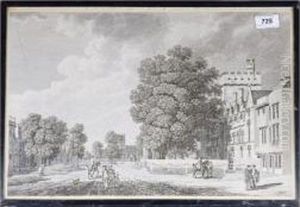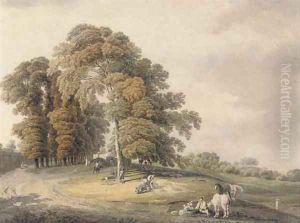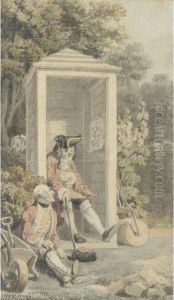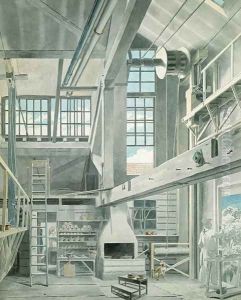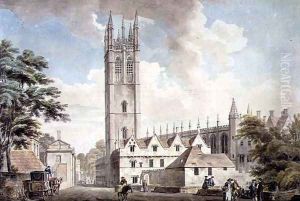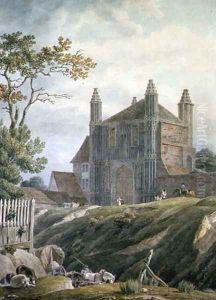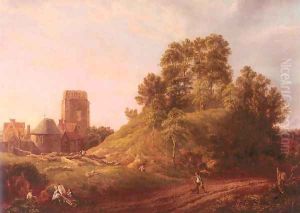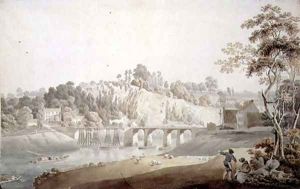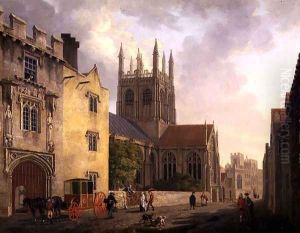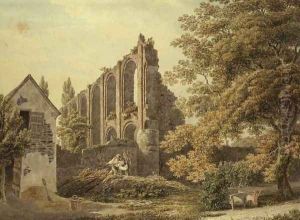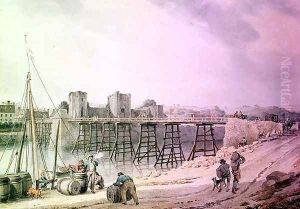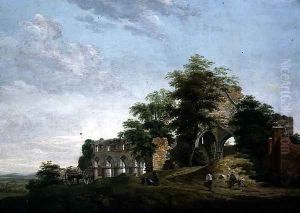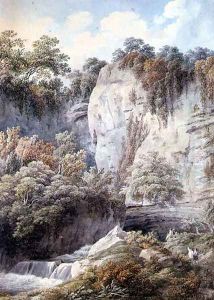Michael Angelo Rooker Paintings
Michael Angelo Rooker, born on April 14, 1746, in London, England, was an English oil and watercolour painter of the 18th century, recognized for his landscape and architectural subjects. He was the son of the prolific engraver Edward Rooker and Elizabeth Coatham and was named after the Renaissance master Michelangelo. Rooker displayed his artistic talents at a young age and was apprenticed to his father.
During his career, Rooker became associated with the Royal Academy. He first exhibited there in 1765 and continued to show his work at the Academy until his death. Rooker was not only a painter but also an accomplished engraver, and he earned the nickname 'Michael 'Angelo' Rooker due to his notable skill in both arts. Though he was never an official member of the Royal Academy, his contributions to the exhibitions were significant.
Rooker often travelled throughout England, drawing and painting landscapes, old buildings, and ruins, which were becoming popular subjects during the Romantic era. His works capture the picturesque and the sublime of the English countryside and are notable for their attention to detail and the atmosphere of the scenes he depicted.
In addition to his landscape paintings, Rooker also worked on theatrical scenery and contributed illustrations for books. One of his most significant projects was the creation of plates for the 'Antiquities of England and Wales' by the antiquarian Francis Grose.
Sadly, Rooker died in relative obscurity on March 3, 1801, in his birth city of London. He had not achieved great fame or fortune during his lifetime, but his works have since been recognized for their contribution to British landscape and architectural art and are held in various collections, including those of major museums and galleries.

